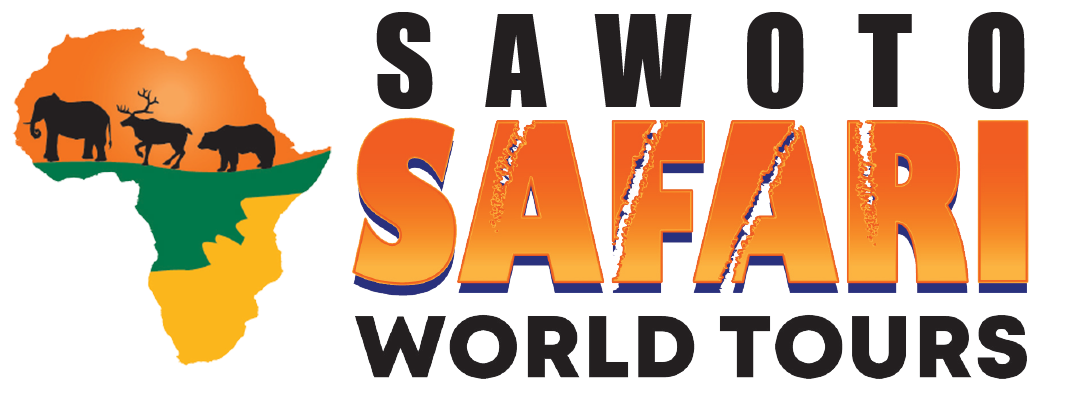Do not hesitate to give us a call. We team is here to talk to you.
+264 81 8211 521
info@safariworldtours.com
Take the journey across Namibia’s contrasting landscapes, including dramatic canyons, towering dunes, and magnificent national parks in search of wildlife, and by night enjoy a sundowner in lodges located perfectly for exploring. This is a 16 Days Wildlife Namibia Lodge Safari tour where your experience will be walking, cultural visits, driving exploring the wildlife that reserves are sure to leave you with lasting memories. Namibia is one of Africa’s most spectacular destinations where you will enjoy inspiring and adventurous wildlife, Desert tours in Swakopmund, Game drives in an open vehicle, Visits to cultural buildings and places.
• Upon Booking a 10% non-refundable Deposit is required to Confirm booking of Tour/Activity/
Accommodation or Car Rental.
• Remaining 90% should be paid not later than 30 Days Prior to Departure.
• If tour is within 40 days or less prior to booking full payment is required.
• Your deposit can either be made through a Bank Transfer, Online Debit or Credit Card Payment.
Guest will be picked up at the airport and depart to Kalahari Namibia with the landscape which is characterised by a large semi-arid sandy savannah draped over a gently rolling inland sea of sand covering most of Botswana and large parts of Namibia and South Africa. It is also the last bastion of the indigenous San people with the modern world having enveloped all the other areas they once roamed. The Namibian portion is made up of red sands covered in thin, wispy, mostly golden grass and dotted with acacia trees and wide-ranging wildlife including gemsbok, impala, jackals and cheetah.
Included Activities
Sundowner Game Drive
Overnight & Kalahari Anib Lodge


Guest rise early this morning and visit to Quiver Forest then drive to the edge of the Fish River Canyon which is carving out an epic rocky wonderland in the south of Namibia, the Fish River has created Africa’s largest and the world’s second-largest canyon. Hot, dry and stony, the Fish River Canyon measures a whopping 160 kilometres in length, at times 27 kilometres in width and 550 metres in depth after arrival guest will have leisure time around pool. The next morning guest will go on the drive around fish river canyon
Included Activities
Day 2: Quiver Tree Forest day Visit
Day 3: Fish River Canyon Drive
Optional Activities: Hiking Canyon
Overnight & Fish River Lodge

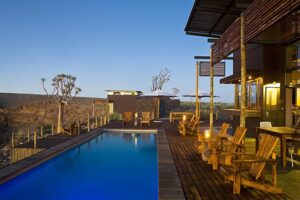
Guest will have breakfast and drive to Aus which serves as an excellent base from which to see the area’s major attraction: the feral horses of the Namib Desert, which run wild and free in the sparsely vegetated plains. The best place for viewings is at the water trough at Garub, which lies just twenty kilometres away from Aus
Included Activities
Wild Horses Drive
Overnight & Klein-Aus Vista Desert Horse Inn


Guest will have early breakfast and departs to Namib Desert area. The Namib Desert is the world’s oldest desert, and although it stretches along the entire length of Namibia’s coastline into southern Angola and even the northern Cape Province of South Africa, the Namib commonly refers to the vast sea of sand extending from Luderitz to Swakopmund. After arrival guest will have leisure time before going on a Night Walk with star Gazing
Included Activities
Night Walk with star Gazing
Optional Activity
Sundowner Drive
Overnight & Namib Desert Lodge

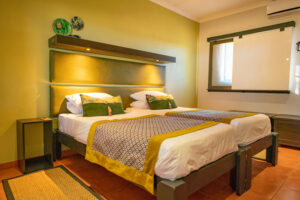
Guest depart to Swakopmund early morning at around 09:00 am from Namib Desert. It’s about 4.5 hours’ drive to Swakopmund. Once clients have arrived in Walvis Bay they will buy lunch and depart to Swakopmund, When Clients arrive in Swakopmund they will check in and taken by the guide for their activity (Quad biking and Sandboard) which is about a 2-hour activity. After the activity clients will go freshen up for dinner at a Restaurant.
Included Activities
Living Desert Tour
Optional Activities
Boat cruise
Overnight & Swakopmund Plaza Hotel
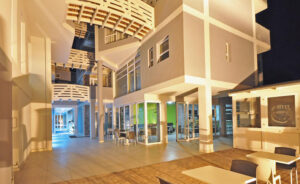

After breakfast guest will depart to cape cross which is the historic area was landed on by the Portuguese in 1486, and they erected a stone cross here in honour of the Portuguese King, however, this cross was replaced by the German settlers in the 1800’s
Included Activities
Visit to the Seal Colony & Skeleton Coast explore
Overnight & Cape Cross Lodge
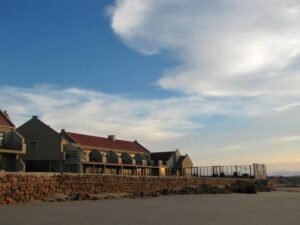
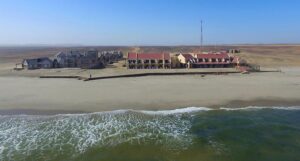
Guest will have breakfast and take off to Palmwag which is a nature reserve idyllically located along a palm-lined tributary of the Uniab River, halfway between Swakopmund and Etosha, providing an ideal base from which to see the sights of the Kunene region or embark on one of the many local hiking trails. Water is scarce in this area, so the river’s presence often lures elephants closer to the camps.
Included Activities
Game Drive
Visit to Himba Tribe
Optional Activities
Rhino Tracking
Overnight & Palmwag Lodge
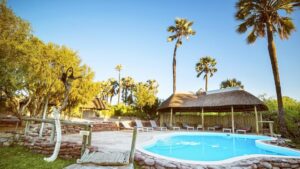

Guest will have breakfast and take off to Twyfelfontein. The name ‘Twyfelfontein’ translates to ‘Fountain of Doubt’, which refers to the perennial spring situated in the impressive Huab Valley flanked by the slopes of a sandstone table mountain.
Included Activities
Damara living Museum, Rock engravings, Burn Mountain & Organ Pipes Geological Landscape & Desert Elephants
Overnight & Twyfelfontein Country Lodge
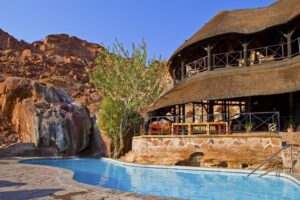

Guest will have breakfast then depart to Etosha and go on an afternoon game drive in the afternoon. Situated in the western part of Etosha National park, a worldfamous wildlife sanctuary in the northwestern part of Namibia, Etosha West is the wilder western region accessed through Galton Gate. Etosha has lions, giraffes, rhinos, zebras, springbok and elephants. This on top of many lesser and common plains herds, and abundant birds makes game viewing in Etosha.
Included Activities
Afternoon Game Drive
Overnight & Dolomite Camp, Etosha West
Today you head into one of the most beautiful desert regions in Namibia, The 22000 hectare nature reserve is home to AfriCAT, a carnivore sanctuary, which gives the captive cats a second chance to be released back into the wild and become completely independent hunters in a protected area right in the middle of commercial cattle farmland
Included Activity
Game Drive Afternoon
Optional Activities
Rhino Tracking
Overnight & Okonjima Lodge
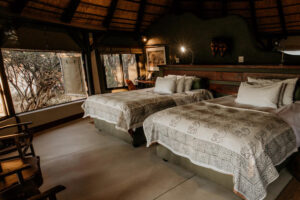
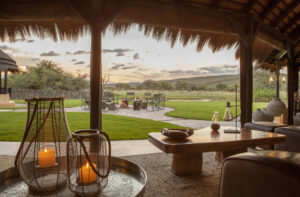

Guest will grab early breakfast and depart to Khan which originally was a cattle farm but was converted into a game farm. The Lodge offers en-suite accommodation in true Namibian style. Activities include game drives, bird watching, game viewing, guided walks in the bushveld and target shooting. Upon arrival guest will go on an afternoon game drive and the next morning after breakfast go on Morning Game Drive.
Included Activities
Day 1: Afternoon Game Drive
Day 2: Morning Game drive
Overnight & Khan River Lodge
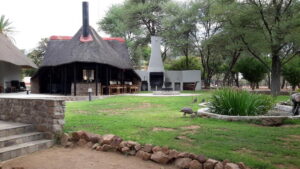

After breakfast, grab your camera and take advantage of the morning light as they are driving back to Windhoek on the road. Windhoek is situated in Central Namibia, the cosmopolitan city of Windhoek serves as the capital of the country.
Overnight & Weinberg Windhoek
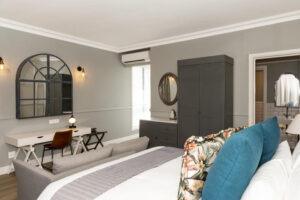
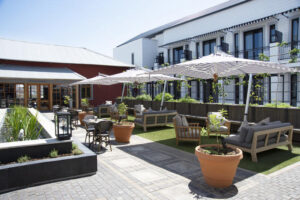

From custom-crafted artwork on the convention center walls to furniture in guest rooms, recorded music from the streets of Cape Town and original crafts for guest souvenirs, Kalahari has a passion for sharing the beauty of Africa with resort guests.
The Kalahari Desert is inhabited primarily by Bantu speakers and Khoisan-speaking San, with a small number of Europeans.
Nǁng is one of the indigenous languages of South Africa, part of the Tuu language family found in parts of the interior, and in neighbouring Botswana. It’s spoken primarily by the San – the first tribe of hunter gatherers in the area, also known as “Bushmen”.
As the Wisconsin Dells began to develop into today’s “Waterpark Capital of the World,” Nelson built the first Kalahari Resort in 2000 and the rest is history. May 2000 – Kalahari opens its first property in Wisconsin Dells.
According to NASA, these rocks were folded and faulted around one billion years ago by mountain-building forces similar to those currently raising the Himalayas. Over millions of years, erosion planed off the mountains and formed the low hills that we see in the Kalahari Desert today.
The Fish River Canyon of southern Namibia is the second largest canyon in the World after the Grand Canyon of the USA. It consists of a northern upper and a southern lower canyon.
The Fish River Canyon, Africa’s answer to the Grand Canyon, is one of the best places in Namibia to stand in awe of the raw majesty of nature. Measuring 27km/17mi wide, 550m/1804ft deep, and 160km/99mi long, it’s the largest canyon on the continent and Namibia’s greatest geological wonder.
The beginnings of the canyon started about 500 million years ago when a fracture of the earth’s crust resulted in the collapse of the valley bottom forming a broad valley running north–south. Southward-moving glaciers deepened it, with more faults and erosion adding to the effect.
The village’s name comes from the Khoekhoe for “big snake.” The village was formerly the site of a prisoner-of-war camp established by the South African army in 1915 to house German inmates captured during the First World War. The inmates initially lived in tents but later built brick houses.
Having endured arid or semi-arid conditions for roughly 55–80 million years, the Namib may be the oldest desert in the world and contains some of the world’s driest regions, with only western South America’s Atacama Desert to challenge it for age and aridity benchmarks.
Namib is a vast cold coastal desert in southern Africa. The name has been derived from the world Nama which means “there is nothing”. The desert is arid and uninhabited barring a few scattered towns.
Flowing up from the Antarctic, the Benguela Current carries frigid waters with strong currents, so Namibia’s beaches are not ideal for swimming, but the contrast of desert and water is certainly a sight to behold.
This is thought to be the oldest desert in the world and has unforgettable terrain. It’s also home to a lot of wildlife – including some unique species – like the desert elephant. This desert has a diverse landscape as you cross it, and you’ll even see some greenery during the wet season.
The red color is a coating of iron oxide, which becomes more prominent (redder) as the desert stretches farther inland from the coast. The sea of red is interrupted in areas by small areas of white.
In Windhoek and Swakopmund, avoid walking through deserted streets and neighborhoods after dark. Ask your hotel or restaurant staff to arrange a taxi for you.
Swakopmund is a beach resort and characterized by German colonial architecture. The city was founded in 1892 as the main harbour for German South West Africa. Buildings in the city include the Altes Gefängnis, a prison designed by Heinrich Bause in 1909.
Swakopmund (German for “Mouth of the Swakop”) is a city on the coast of Namibia, 360 km west of Windhoek, Namibia’s capital. It is the capital of the Erongo administrative district. The town has 42,000 inhabitants and covers 193 square kilometres (75 sq mi) of land.
The quality of tap water in Namibia is quite good and perfectly safe to drink. Many of the lodges in the more remote areas will make use of water from a borehole which is also safe and healthy to drink.
Cape Cross offers two highlights: Firstly a historical landmark where Diego Cão set foot on land in 1485 as the first european. Secondly a very large cape fur colony including deafening shouts und heavy smells.
Cape Cross Nature Reserve is the largest Cape fur seal colony in the world. During the breeding season in November and December, there may be up to 210 000 seals at Cape Cross.
It is home to one of the largest Cape Fur Seal colonies in the world. It derives its name from the padrão (stone cross) that was initially erected by Diogo Cão in 1486.
Distribution: The coastline of southern Africa and the complete coastal area of Namibia from the Orange River in the south to Kunene River in the north. Diet: Fish comprise of 90% of their diet, mainly sardine, anchovy, hake, gobies and horse mackerel. An adult Cape fur seal eats roughly 270kg of food a year.
Palmwag is a tourism concession area on communal land in northern Namibia. It is located in the Kunene region, in northwestern Damaraland, halfway between Swakopmund and the Etosha National Park.
Concession Area means a space or privilege granted within or upon a premises that is used for the purpose of a subsidiary business or service
Twyfelfontein is situated in the southern Kunene Region of Namibia, an area formerly known as Damaraland. The site lies on the banks of the Aba Huab River in the Huab valley of the Mount Etjo formation.
In 2007, the United Nations educational and cultural authority UNESCO declared Twyfelfontein a world heritage site. It was the first one in Namibia, followed a few years later by the Namib-Sand-Sea heritage site in the coastal Namib Desert.
Cheetahs and lions are regular visitors to these waterholes. Olifantsbad: Attractive Mopani veld situated between Gemsbokvlakte and Aus. Lion, large elephant herds, zebra, and various antelope such as springbok, black-faced impala, red hartebeest, kudu and gemsbok visit this water hole.
Etosha Village is only 2km from the Anderson Gate of Etosha National Park, Undoubtedly, you will find excellent accommodations, facilities and campsites at Etosha Village.
Morning drives to Etosha National Park commence at approximately sunrise, depending on gate opening times which vary during seasonal changes, and return around 12H30 /13H00.
If your primary purpose for going on a safari is to see the majestic Big Five, Etosha National Park is a great choice, as four of the Big Five are present. Only the buffalo is absent, while lions and elephants are very commonly spotted.
Driving from Windhoek the distance to Dolomite Camp is 590km. Take the B1 past Otjiwarongo 250 km, turn on the C38 towards Outjo, then on the C40 towards Kamanjab, then turn right on the C35 towards the Galton /Otjovazandu area – 340km. The journey is all on tar road except the last 45km inside Etosha Park.
Erindi, meaning “place of water”, is a sustainable natural wonderland.
